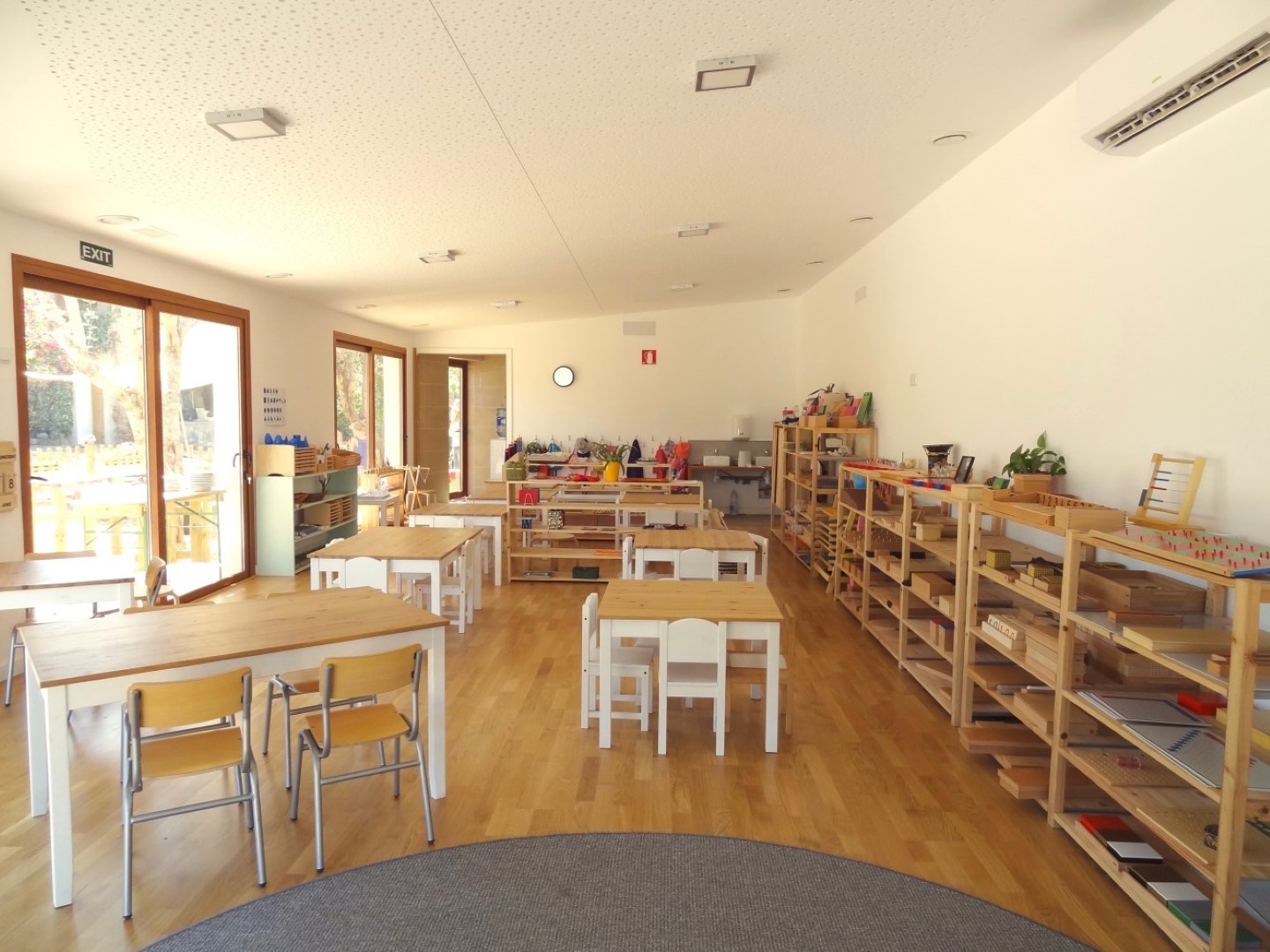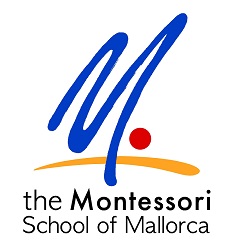Montessori and National Curriculum of England
The Montessori curriculum for our children from 3 to 5 years covers Practical Life, Sensorial, Mathematics, Language, Arts and Cultural activities. The Montessori curriculum aims at achieving the education goals of the national curriculum for England. The curriculum is specifically designed to help children reach their fullest potential at their own pace. This curriculum is taught in our Casa classroom.
Curriculum for 3-5 years
Practical Life
Learning fundamental life skills, or practical life, is the component of the Montessori Early Years Learning Programme that links the home environment and the Children’s House. Children love order, and they love to be independent, and this desire finds expression in the exercises of practical life. During these exercises children use a variety of materials and activities to support increased control and refinement of:
- whole body equilibrium and coordination
- fine motor skills
- voluntary control of attention and the ability to concentrate
- the ability to sequence the steps of a task in order to achieve a goal
- everyday living skills.
To achieve the goal of a practical life exercise, children must use precise movements. As they strive for precision of movement, children develop their will, that is, they develop self-control, the ability to self-regulate, voluntary control over movement, as well as voluntary control over attention, the foundation of the ability to concentrate. If they are free to work at their own pace uninterrupted, children gradually extend the period of time they are able to concentrate. When they have completed a cycle of work, without being disturbed, children typically experience feelings of great satisfaction and increased confidence in their own abilities.
Practical life for children aged between three and six years in the Children’s House encompasses four main areas:
- control of movement
- care of person
- care of environment
- grace and courtesy/social relations.
In the Children’s House the skills needed to succeed at the exercises in these areas are developed initially in a series of ‘transitional’ exercises in which children practise ‘preliminary movements’. These exercises build on the skills learnt by children in the Infant Community.
Sensorial
Young children use their senses to explore their environment. Through sensory exploration they receive a myriad of sensory impressions from birth. From about the age of three, the developing human mind, together with the sensitive period of order, naturally strives to discriminate similarities and differences resulting in young children sorting, arranging and classifying the many sensory experiences they have collected so far. The inventory of sensory experience they construct at this age becomes a resource they use both for thinking and creating.
The Montessori materials children use to fine-tune sensory perception and discrimination, the sensorial materials, are some of the most distinctive and iconic of all the Montessori materials. The sensorial materials are sets of definitive or graded objects designed to precise specifications. Each set isolates one sensory quality only in regular and measurable ways. The qualities isolated by the Montessori sensorial materials include: texture, colour, shape, dimension, mass, taste, smell, temperature, pitch and intensity of sound. Children are taught a precise vocabulary to talk about the sensory qualities, and their variations, embodied in the materials. They learn these words in contrasting sets, for example, red/blue/yellow; loud/soft; long/short; rough/smooth; triangle/square/circle; cube/sphere. In addition, children are introduced to the superlative and comparative language for example longer/shorter, longest/shortest. This vocabulary then becomes a resource children can use to make more precise meanings about their world. Children use the sensorial materials in the exercises of the senses.
The exercises of the senses provide children with keys to exploring the world, as well as a means to refine perception and to construct a foundation for abstract thinking and creative expression. Initially, the exercises provide children with opportunities to use each sense to distinguish contrasting perceptions. Later, the children use the exercises to discriminate between increasingly fine variations in order to grade the objects in each set.
The exercises of the senses include exercises through which children learn to attend to their perceptions and to discriminate between finer and finer variation using the following senses:
- visual (dimension, colour, shape)
- tactile (texture, mass, temperature, stereognostic)
- auditory (pitch, timbre, rhythm, style, intensity of sound)
- olfactory (smell)
- gustatory (taste)
Mathematics
The study of mathematics is a reflection of the human tendencies for investigation and orientation, for order and classification, for reasoning and making judgements, and for calculating and measuring. In the Montessori Children’s House, when mathematical concepts are first presented to children, they are embodied in concrete materials.
Mathematics in the Children’s House builds on and extends the exercises of practical life and the exercises of the senses, as well as the many mathematical experiences children encounter incidentally in their daily lives, including experiences with:
- visual representation of mathematical concepts
- pattern and order
- problem solving
- cardinal and ordinal numbers
- place value
- operations (addition, subtraction, multiplication, division)
- fractions
- spatial relations e.g. placement of objects, spatial patterns, one-to-one correspondence of objects and two-dimensional shapes
- measurement e.g. length, mass, time, temperature, volume, perimeter, area
- word problems (addition, subtraction, multiplication, division)
As they work with the exercises of the senses, children are making judgements in relation to distance, dimension, graduation, identity, similarity and sequence. Building on this foundation, the Montessori mathematics materials introduce children to:
- counting (from 1 to 10, 10 to 90, linear 1 to 100 and 1000, and skip-counting as an introduction to multiplication)
- place value to four digits
- number operations (addition, subtraction, multiplication, division).
The base ten number system is represented for children in concrete form using golden beads organised so they vary simultaneously in quantity, size, mass and geometric shape. Children are also given the corresponding symbol for each quantity. In this way, children experience relations between the hierarchies of the system in multiple ways. Using this material in active and enjoyable games, children learn to add, subtract, multiply and divide. This material supports the heightened sensitivity for number children tend to experience around the age of four.
Language
The first, indirect preparation for mastering written language begins with the exercises of practical life and the exercises of the senses. The exercises of practical life develop fine motor skills and the exercises of the senses prepare children to distinguish between the different sounds of the language and the different shapes of the letters.
When children first work with the letters of the alphabet, they use sandpaper letters as part of activities in which they simultaneously hear the sounds of the letters, and see and trace the shape of the letters. When children know enough letters, they are introduced to a movable alphabet made out of wooden or cardboard letters. Children use the letters to compose and write down their own words, phrases, sentences and finally stories. Because children are using their own language to compose with the movable alphabet, they may discover that they can read their own writing, especially when the movable alphabet work is accompanied by activities that provide children with structured opportunities for decoding practice. They soon transfer their skills to reading books, both to themselves and others. They are later introduced to word study materials and materials for exploring spelling patterns. To increase reading fluency and comprehension, children work with materials that draw their attention to the grammar patterns of the language.
All elements of the Montessori language programme provide children with a platform for building self-confidence and using language creatively across a variety of modes of communication. Children also have the opportunity to enjoy a wide range of good quality and varied literature, as well as factual and reference books.
The multi-age grouping of children means younger children have many opportunities to watch and listen to older children reading both story and factual books.
Cultural Activities
Movement and Dance
The development and refinement of movement is an integral part of the child’s development from birth to six years of age. The ability to appreciate dance and to be able to move one’s body as a form of expression is an important facet of children’s development. The focus on specific movements can assist children’s development in many other areas, for example whole body coordination. Dance is also an important aspect of health and physical exercise. Young children have a natural sense of rhythm and often lack inhibition so dance comes naturally and spontaneously to them.
In the Children’s House there are many walking on the line activities that involve control and coordination of movement. The silence game involves practice in inhibition of movement and stillness of the body. Additional movement on the line activities call for increasing control when marching, running and skipping/galloping along with recognition of the rhythmical notation that calls for these kinds of movements.
Visual Arts
Artistic expression was considered by Dr Montessori to be one of the fundamental needs of humans. In particular, she encouraged children to draw. She felt that if children have fine motor control of the hand, learned through the exercises of practical life, combined with trained skills in perception, learned through the exercises of the senses, they would be able to create visual art works of a high quality.
Music
In Montessori early childhood settings music is integrated into the environment and the curriculum. It is not treated as something separate taught only by music experts. It is a form of human expression open to everyone.
In the Children’s House children are introduced to four parallel series of music activities and exercises in each of the following areas:
- singing
- music appreciation
- music literacy (pitch and notation) with the Montessori bells
- rhythm (notation)
- playing of instruments
The music materials in Montessori early childhood settings have the following features:
- They are always available for the children to use when they choose (except for the percussion instruments).
- They are prepared so children can use them independently.
- They allow for repetition.
- They are designed to lead to concentration, perseverance, success and confidence.
- They are an integral and constant part of the environment.
Cultural Subjects: Science, Geography and History
Children enter the Children’s House when their interest in observing natural and social phenomena is at its peak. They are in the process of building a framework for classifying the features of the world around them. The exercises of the senses develop and refine children’s powers of observation and sensory perception. Children learn to appreciate the natural world and social world through their senses.
Activities that provide children with experience of the natural and social world are presented in the same integrated way as all Montessori activities. Knowledge is presented to children in concrete form they can manipulate in purposeful ways. Activities allow for freedom of choice and repetition. Lessons can be given individually, or in small or large groups.
A systematic approach to the study of nature and society in the Children’s House lays the foundation for Cosmic Education, which is the major focus of studies for children aged from six to twelve years.
Curriculum and a prepared environment
A Montessori classroom is a carefully prepared environment in which children are free to be themselves, and do what they want to do, when they want to do it. The materials for children from three to six years old are designed to meet the sensorial needs of the child to feel, smell, lift, and hear. The Montessori materials are materials of development, not teaching aids. They are designed so children develops themselves through their work.

Inside the Casa classroom for 3-6 year olds

